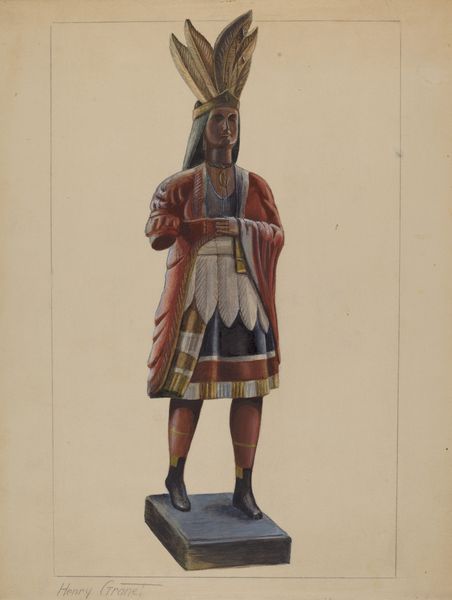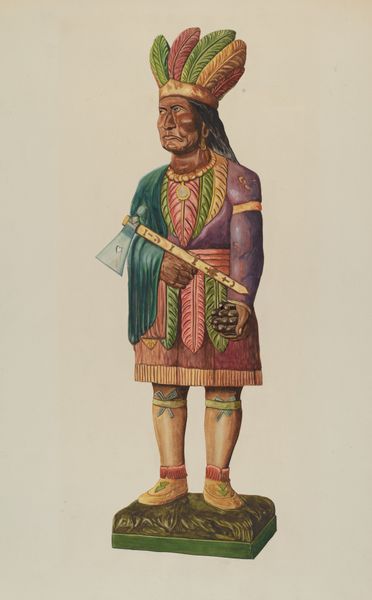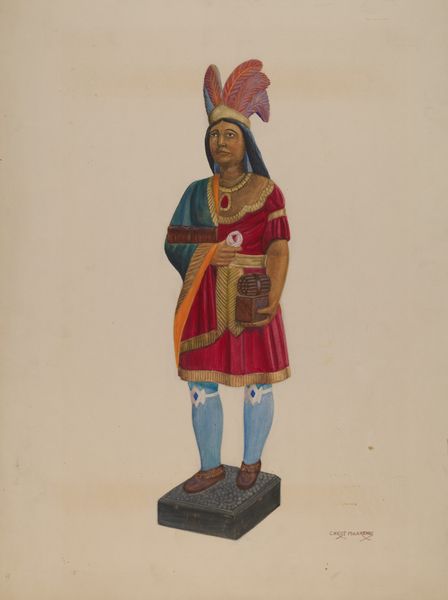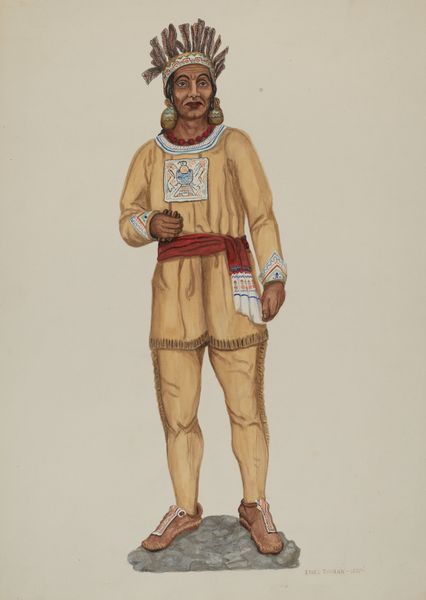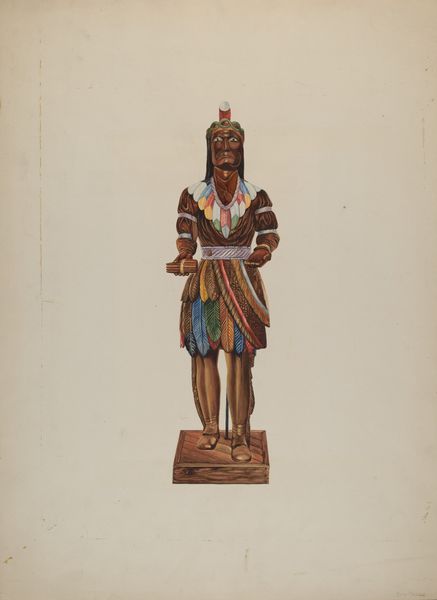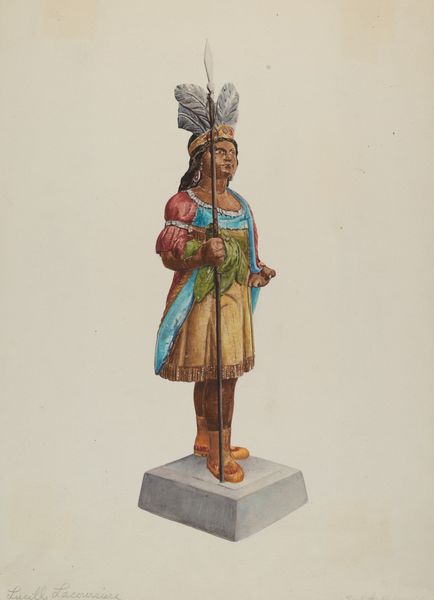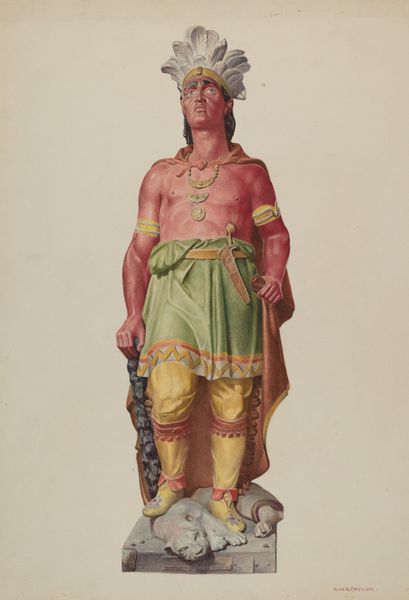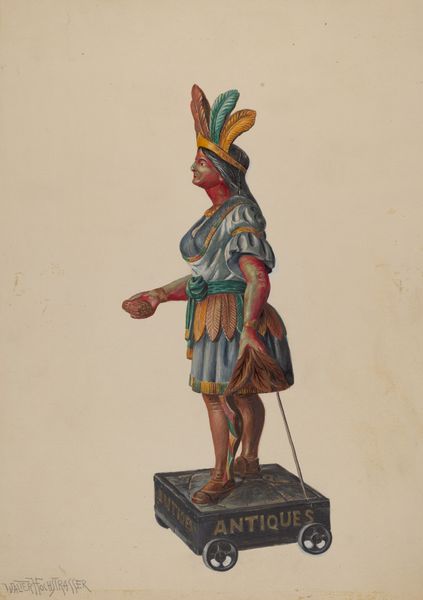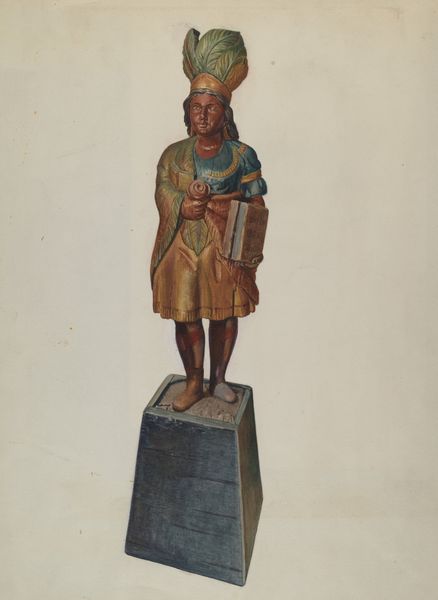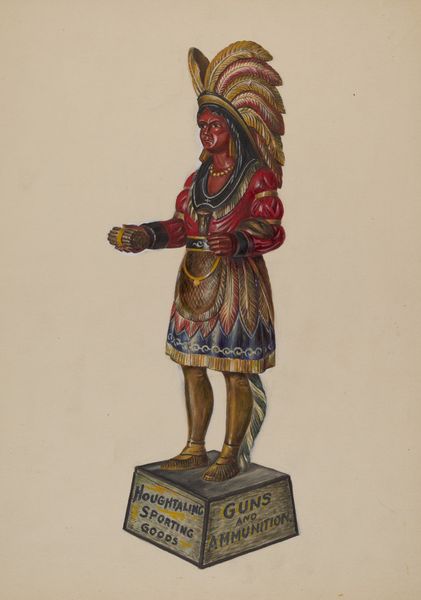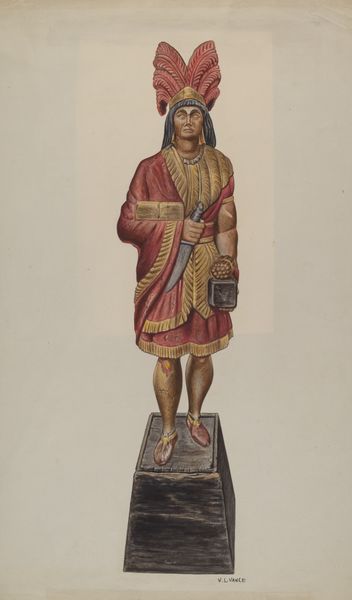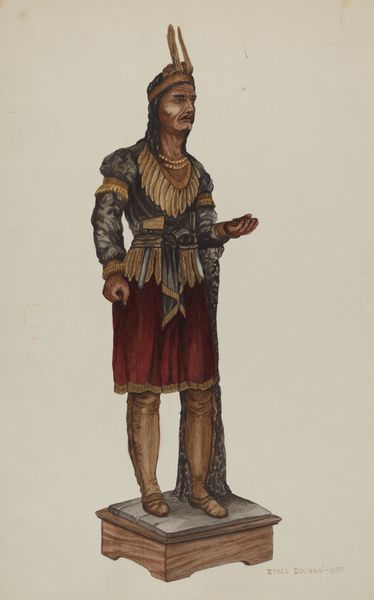
drawing, paper
#
drawing
#
figuration
#
paper
#
watercolour illustration
#
watercolor
Dimensions: overall: 48.5 x 29.3 cm (19 1/8 x 11 9/16 in.)
Copyright: National Gallery of Art: CC0 1.0
Curator: Here we have Clarence W. Dawson's "Cigar Store Indian," created around 1941. It’s rendered with watercolor and drawing techniques. What’s your immediate response to it? Editor: It feels steeped in irony, doesn’t it? There's an undeniably melancholic air about it. A static figure, replicated en masse, standing as a sentinel for a commerce built upon colonial injustices. Curator: Certainly. Focusing on its visual elements, consider the meticulous detail Dawson employs. The precise linework defining the figure’s form, the controlled washes of watercolor that suggest texture, from the headdress feathers to the simulated carving of the wooden figure itself. Note also how the pose with the outstretched hand, seems like both an invitation and perhaps an imposed demand. Editor: That "invitation," as you call it, is layered. Historically, these figures were commercial props, tokens signaling "Indian" authenticity to lure customers. Dawson, by isolating it in watercolor, subtly underscores the exploitation embedded within this imagery and its deployment. Consider how that relates to notions of Indigenous representation. Curator: The semiotics are rich indeed. Let's observe the palette—primarily muted browns and creams, punctuated by red, white and blue which appear somewhat faded. Editor: They evoke a peculiar sense of patriotism filtered through this commodified, stereotyped image. One cannot help but question Dawson's intentions here. Was he simply documenting, or critiquing the object itself, and more broadly, the fraught historical relationship? Curator: His technique is remarkably realist in service of this representational study, that, while representational, allows us to perhaps interrogate a deeper network of power, cultural appropriation and colonial legacies, right? Editor: Absolutely. The artist’s visual treatment pushes past a surface-level understanding. We’re confronted with questions of agency, visibility, and the perpetuation of stereotypes that persist even today. Curator: Dawson’s artistic decisions invite layered perspectives, leading us to question not just the aesthetic value but the cultural weight these images carry. Editor: Exactly. It’s a striking piece, and a powerful example of how even seemingly simple representations can unlock complex and necessary conversations.
Comments
No comments
Be the first to comment and join the conversation on the ultimate creative platform.
